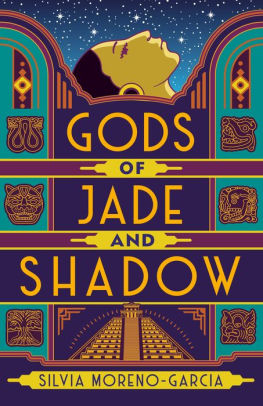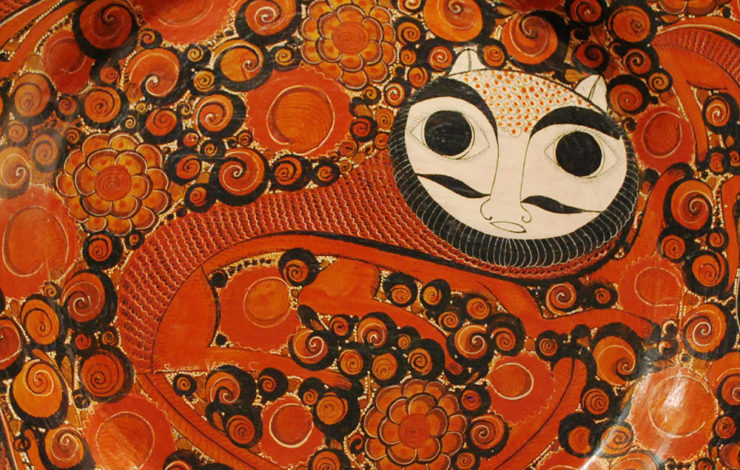Witches in European folklore fly through the air on broomsticks, but in Latin America they change shapes, turning into different animals. This belief in shape-changing sorcerers, which is present in many Indigenous communities across Mexico and Central America, seems to be based on old Prehispanic concepts of the animal, the soul and the self.
The Aztecs spoke of a nahualli or nahual, an animal double that we all possess. This concept might have mixed with European ideas of witchcraft and werewolves, yielding the modern notion that a nahual is a sorcerer who can transform into an animal.
The nahual is always a creature of evil. It drinks the blood of people, often children, and spreads disease. Nahuales, when they transform into predators, such as coyotes, may also threaten a farmer’s livelihood. My great-grandmother told me you had to watch out and make sure the nahuales didn’t eat the chickens. Fighting off nahuales could be dangerous. Although they seemed to be more vulnerable in their animal form, they were not to be trifled with. The nahual derives from central-Mexican cultures, but the Mayan people of southern Mexico also have an equivalent sorcerer: the way chivo (sometimes spelled huay chivo). The way chivo is a sorcerer who can transform into a goat.
Sorcerers also transform into other animals, including birds and dogs. In fact, there seems to be no limit to the type of animal shape a person can acquire: there are stories of sorcerers becoming pigs. I haven’t come across stories of women as way chivos, so there might be some gendering of the role, although women do transform into other animals. These Mayan sorcerers, just like the central Mexican ones, perform their misdeeds during the cover of night. They turn into animals by spinning nine times in their place or by taking off their heads. Their predilections seem to vary quite a bit. Sorcerer-pigs like to scare people and kill animals. Sorcerer-cats lick the faces of young women making them ill so that they waste away. The sorcerer-goat seems rather versatile: I’ve heard he does everything from eating children to haunting cemeteries. The way to deal with these sorcerers varies. Some people say you must use salt, for example, rubbing bullets with a cross of salt. My great-grandmother’s remedy for dealing with nahuales was to put a pair of open scissors beneath the bed, though, living through a Revolution, she wasn’t adverse to simply shooting a rifle.
Just as the Aztec idea of animal doubles might have inspired the creation of these shape-shifting sorcerers, ancient Mayan beliefs about human souls might have inspired the modern way chivo. For example, the people of Chamula believe every person has an animal double and whatever happens to your animal double affects you. The Maya of Zinacatan believe humans have multiple souls, one of which is an animal.
Ancient Maya art features many animal companions or animal transformations. The Mayan glyph for way (plural wayob) refers to animal transformation, but is also related to sleep and hence to dreams, indicating that the sleeper might be able to transform into an animal or come in touch with their animal double. Through ritual acts, such as dancing, bloodletting and special ceremonies, priests and kings could also connect with their animal doubles.
Buy the Book


Gods of Jade and Shadow
In the Popol Vuh, the Hero Twins go on a quest to defeat the Lords of Xibalba. At one point, they perform dances associated with animals, including the armadillo dance and the centipede dance. Centipedes, incidentally, are represented as skeletal or bony serpents and are therefore associated with the Underworld as serpents of corruption. As a trivia point, William S. Burroughs seems to have had something of a centipede phobia, technically chilopodophobia which probably started when he was a student in Mexico and came across depictions of centipedes in Prehispanic art. Due to the Naked Lunch movie directed by David Cronenberg I also have little love for those many-legged creatures.
Dogs are also associated with the Underworld, both in Mayan and Aztec mythology. They accompany the souls of the dead in their journey into the afterlife. Mayan and Aztec burials sometimes included dogs, so that they might assist the deceased in their voyage and dogs were also sacrificed during certain ceremonies. For example, the god Ek Chuah was honored with the sacrifice of a dog with spots the color of cacao, cacao being an incredibly important crop.
Many young people I’ve talked to in Mexico have no idea what a nahual is, so there’s a generational and geographical component to this type of folklore. Young residents of cities will know all the plot points in Stranger Things, but not the legends of old. Still, in some communities they continue to be living, breathing things.
In Gods of Jade and Shadow, my novel set in 1920s Mexico, the protagonist Casiopea Tun meets several magical beings, including a way chivo. If you pay close attention, almost every character in the book is also associated with an animal. The way chivo is obvious (it’s a goat, of course), some of the other associations are more subtle. Although animal transformations ultimately play a small role in the overall arc of my novel, Gods of Jade and Shadow is utilizing old and complex ideas about animals and mirror images. And no, there’s not a centipede to be found within its pages.
Photo: Detail of a serving plate decorated with nahuals on display at the Museum of Artes Populares in Mexico City. (Alejandro Linares Garcia; CC BY-SA 4.0)
Silvia Moreno-Garcia is the author of Signal to Noise, named one of the best books of the year by BookRiot, Tordotcom, BuzzFeed, io9, and other publications; Certain Dark Things, one of NPR’s best books of the year, a Publishers Weekly top ten, and a VOYA “Perfect Ten”; the fantasy of manners The Beautiful Ones; and the science fiction novella Prime Meridian. She has also edited several anthologies, including the World Fantasy Award winning She Walks in Shadows (aka Cthulhu’s Daughters). She lives in Vancouver, British Columbia. Gods of Jade and Shadow is her latest novel.










